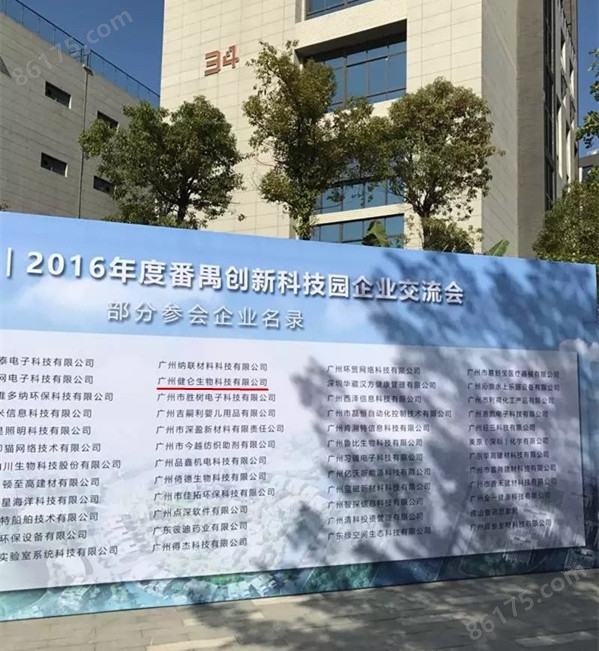其他品牌 品牌
代理商厂商性质
广州市所在地
肠道贾第虫病毒诊断快检卡(胶体金法)
广州健仑生物科技有限公司
Cellabs公司是一个的生物技术公司,总部位于澳大利亚悉尼。专门研发与生产针对热带传染性疾病的免疫诊断试剂盒。其产品40多个国家和地区。1998年,Cellabs收购TropBio公司,进一步巩固其在研制热带传染病、寄生虫诊断试剂方面的位置。
肠道贾第虫病毒诊断快检卡(胶体金法)
该公司的Crypto/Giardia Cel IFA是国标*推荐的两虫检测IFA染色试剂、Crypto Cel Antibody Reagent是UK DWI水质安全评估检测的*抗体。
【Cellabs公司中国总代理】
Cellabs公司中国代理商广州健仑生物科技有限公司自2014年就开始与Cellabs公司携手达成战略合作伙伴,热烈庆祝广州健仑生物科技有限公司成为Cellabs公司中国总代理商。
我司为悉尼Cellabs公司在华代理商,负责Cellabs产品在中国的销售及售后服务工作,详情可以我司公司人员。
主要产品包括:隐孢子虫诊断试剂,贾第虫诊断试剂,疟疾诊断试剂,衣原体检测试剂,丝虫诊断试剂,锥虫诊断试剂等。
广州健仑生物科技有限公司与cellabs达成代理协议,欢迎广大用户咨询订购。
我司还提供其它进口或国产试剂盒:登革热、疟疾、流感、A链球菌、合胞病毒、腮病毒、乙脑、寨卡、黄热病、基孔肯雅热、克锥虫病、违禁品滥用、肺炎球菌、军团菌、化妆品检测、食品安全检测等试剂盒以及日本生研细菌分型诊断血清、德国SiFin诊断血清、丹麦SSI诊断血清等产品。
欢迎咨询
欢迎咨询2042552662
【Cellabs公司产品介绍】
公司的主要产品有:隐孢子虫诊断试剂,贾第虫诊断试剂,疟疾诊断试剂,衣原体检测试剂,丝虫诊断试剂,锥虫诊断试剂等。Cellabs 的疟疾ELISA试剂盒成为临床上的一个重要的诊断工具盒科研上的重要鉴定工具。其疟疾抗原HRP-2 ELISA检测试剂盒和疟疾抗体ELISA检测试剂盒已经成为医学研究所的*试剂盒。Cellabs产品主要包括以下几种方法学:直接(DFA)和间接(IFA)免疫荧光法,酶联免疫吸附试验(ELISA),和胶体金快速测试。所有产品都是按照GMP、CE标志按照ISO13485。
二维码扫一扫
【公司名称】 广州健仑生物科技有限公司
【】 杨永汉
【】
【腾讯 】 2042552662
【公司地址】 广州清华科技园创新基地番禺石楼镇创启路63号二期2幢101-3室
【企业文化】



小肠受盛功能失常,则气机阻滞,表现为腹部疼痛;若化物功能失常,可导致消化吸功能障碍,表现为腹胀,腹泻,便溏等。泌,即分别;清,即水谷精微;浊,指食物中的糟粕。泌别清浊是指小肠在对胃初步消化的饮食物进行进一步消化的同时,随之进行的分清别浊的功能。小肠不仅具有吸收功能,而且还具有分泌功能——它能分泌小肠液。小肠的分泌功能主要是由小肠壁粘膜内的腺体(十二指肠腺和肠腺)完成的。正常人每天分泌1~3升小肠液。 小肠液的成分比较复杂,主要含有多种消化酶、脱落的肠上皮细胞以及微生物等。所含有的各种消化酶中,有肠激活酶、淀粉酶、肽酶、脂肪酶以及蔗糖酶、麦芽糖酶和乳糖酶等,这些酶对于将各种营养成分进一步分解为zui终可吸收的产物具有重要作用。小肠液的分泌受多种因素的调节,其中食团以及其消化产物对肠粘膜的局部刺激(包括机械性刺激和化学性刺激),可引起小肠液的分泌,这些刺激是通过肠壁内神经丛的局部反射而引起肠腺分泌的。小肠液的作用主要是进一步分解糖、脂肪、蛋白质,使它们成为可吸收的物质。大量的小肠液,可以稀释消化产物,使其渗透压下降,从而有利于吸收的进行。小肠腔面的环行皱襞从距幽门约5cm处开始出现,在十二指肠末段和空肠头段极发达,向下逐渐减少和变矮,至肠中段以下基本消失。粘膜表面还有许多细小的肠绒毛(intestinal villus),是由上皮和固有层向肠腔突起而成,长0.5~1.5mm,形状不一,以十二指肠和空肠头段zui发达。绒毛于十二指肠呈叶状,于空肠如指状,于回肠则细而短。环行皱襞和绒毛使小肠表面积扩大20~30倍,总面积达20m2左右。绒毛根部的上皮下隐至固有层形成管状的小肠腺(smallintestinal gland),又称肠隐窝(intestinalcrypt),故小肠腺与绒毛的上皮是连续的,小肠腺直接开口于肠腔。粘膜下层:为疏松结缔组织,含较多血管和淋巴管。十二指肠的粘膜下层内有十二指肠腺(duodenalgland),为复管泡状的粘液腺,其导管穿过粘膜肌开口于小肠腺底部。
If the function of the small intestine is abnormal, it will block the gas engine and show abdominal pain; if the chemical function is abnormal, it can lead to digestive and suction dysfunction, manifested as abdominal distention, diarrhea, loose stools, etc. Secretion, that is, respectively; clear, that is, subtle water; turbidity, refers to the dregs of food. Separation of turbidity refers to the ability of the small intestine to separate and digest the foods initially digested by the stomach. The small intestine not only has an absorptive function, but also has a secretory function - it can secrete intestinal fluid. The secretory function of the small intestine is mainly accomplished by glands (duodenal and intestinal glands) within the mucous membrane of the small intestine. Normal people secrete 1 to 3 liters of small intestinal fluid daily. The components of the small intestine fluid are relatively complex and contain a variety of digestive enzymes, shedding intestinal epithelial cells, and microorganisms. Of the various digestive enzymes contained, there are enteric-acting enzymes, amylases, peptidases, lipases, and sucrases, maltase, lactase, etc. These enzymes have the effect of further decomposing various nutrients into the final absorbable products. Important role. The secretion of intestinal fluid is regulated by various factors. Local irritations (including mechanical and chemical stimuli) of the bolus and its digestive products on the intestinal mucosa can cause the secretion of small intestinal fluid. These stimuli are caused by the nerves in the intestinal wall. Partial reflexes of the plexus cause intestinal gland secretion. The role of intestinal fluids is to further break down sugars, fats, and proteins to make them absorbable. A large amount of small intestinal fluid can dilute the digested product and reduce its osmotic pressure, which is beneficial for absorption. The circular folds of the luminal surface of the small intestine began at about 5 cm from the pylorus, developed well at the end of the duodenum and the head of the jejunum, gradually decreased and dwarfed downward, and disappeared below the middle of the intestine. There are many tiny intestinal villus (intestinal villus) on the mucosal surface. It is formed by epithelium and lamina propria protruding from the intestine cavity. The length is 0.5-1.5mm, and the shape is not the same. The duodenum and the head of the jejunum are the most developed. The villi are leaflike in the duodenum, fingerlike in the jejunum, and thin and short in the ileum. Circular folds and villi enlarge the surface area of the small intestine by 20 to 30 times, with a total area of about 20 m2. Under the epidermis of the root of the villi, the small intestinal gland (smallintestinal gland), also known as the intestinal crypt (intestinal crypt), is formed under the epithelium of the villi, so the epithelium of the small intestine gland and villi is continuous, and the small intestine gland is directly opened in the intestine cavity. Submucosa: loose connective tissue, containing more blood vessels and lymphatic vessels. In the submucosa of the duodenum, there is a duodenal gland, which is a vesicular mucous gland. The catheter passes through the mucosal musculature and opens at the bottom of the small intestine gland.